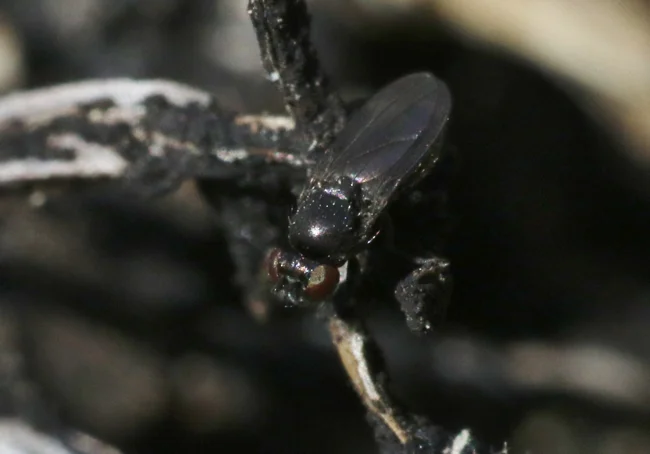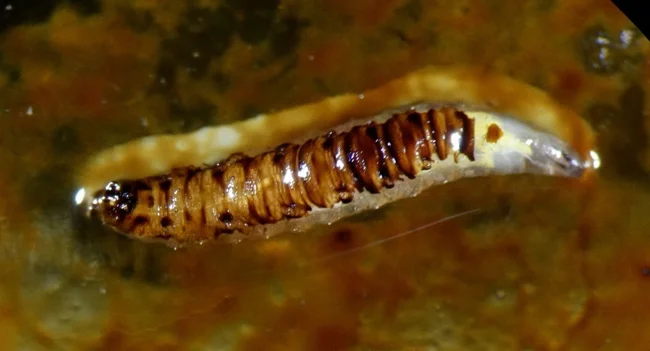Diasemocera petrolei, aka the petroleum fly, is a fascinating insect that not only survives in petroleum, a highly toxic substance to other animals, but actually thrives in it.
For tens of thousands of years, the La Brea Tar Pits near Los Angeles, California, have been a death trap to millions of animals, some extinct, some still around today. Insects, birds, mammals, and even dinosaurs, all found their end in these gooey pits at some point in time, but one tiny insect species managed to adapt to this incredibly toxic environment and actually use it to its advantage. The petroleum fly, a flying insect about the size of a fruit fly, is the only known insect species that can not only survive in the natural asphalt of the La Brea Tar Pits but actually calls it home. Its larvae develop in the viscous petroleum while the mature flies spend most of their lives strolling on the surface of the tar pits in search of food.

Photo: © James Bailey/inaturalist
William Homan Thorpe, a prominent British zoologist, ethologist and ornithologist, once called Diasemocera petrolei “undoubtedly one of the chief biological curiosities of the world.” How the tiny larvae can survive in the toxic La Brea Tar Pits and even consume petroleum without any adverse effects is still not properly understood by scientists.
Petroleum fly larvae spend their lives crawling through petroleum in search of less fortunate insects and arthropods to consume. The La Brea Tar Pits still trap plenty of critters every day, so there is always sustenance to be found for the voracious larvae. They breathe through tiny air tubes located at the back of their translucent bodies, but experiments have shown that they can remain submerged in petroleum for long periods of time without any adverse effects.

Although petroleum larvae rely on the carcasses of dead insects and arthropods for sustenance, they also consume large amounts of petroleum when feeding, but that seems to have no effect on them at all. The toxic substance can be seen through their translucent body, but it just passes through their system without causing any health issues. Even when exposed to 50% turpentine or 50% xylene in laboratory experiments, the flies were completely unaffected. Even when the temperature of the petroleum reaches 38 degrees Celsius, the larvae remain unfazed.
Interestingly, the petroleum fly larvae also rely on the natural asphalt as a moisturizer, as crawling through it in the scorching sun prevents their bodies from drying out.
The larvae only leave the petroleum pits to pupate, usually opting for grass stems on the edge of the pool. Mature petroleum flies have wings, but they rarely ever use them, instead spending their time strolling on the surface of the La Brea Tar Pits. Although their legs are perfectly equipped for navigating the toxic liquid, if their bodies or wings make contact with the viscous liquid, they are just as vulnerable as any other insect and can become food for their own larvae.
The fly larvae of the La Brea Tar Pits were discovered in 1899, but to this day the mechanism that makes them immune to the toxic natural asphalt is largely unknown.






